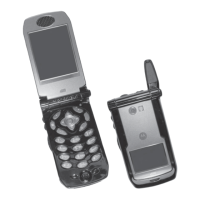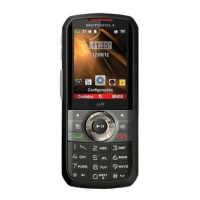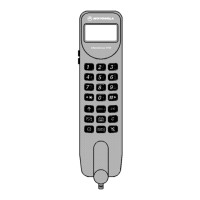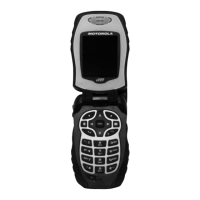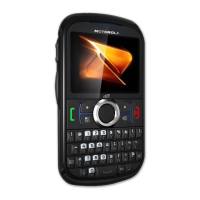OVERVIEW: iDEN Digital Modulation Technology
The units are capable of operation on any channel in the system. This enables them to operate in any
cell. Due to the low power requirements for communications between radio telephones in a
particular cell and cell site, operating channels may be repeated in cells that are outside the coverage
area of each other.
For example, in Figure 1-3, each letter represents a given frequency. Notice that cells A1 and A2
operate on the same frequency because they are a certain distance apart. Users can simultaneously
occupy the same frequency without interfering with each other. This is known as frequency re-use.
The implementation of frequency re-use increases the cell handling capability of the system without
increasing the number of available channels. When re-using identical frequencies in a small area,
co-channel interference can be a problem. The iDEN system can tolerate higher levels of co-channel
interference than analog systems by incorporating digital modulation. This means that cells using
identical frequencies can be physically closer than similar cells in analog systems. Therefore, the
advantage of frequency re-use can be further enhanced in an iDEN system, enabling greater traffic
handling in high-use areas.
Because of TDMA, several calls can share the same carrier. The carrier is divided into a continuous
stream of TDMA frames, each of which is split into six time slots (see Figure 1-2 on page 3). When
a connection is required, the system allocates the subscriber a dedicated time slot within each
TDMA frame. User data (speech or data) for transmission is digitized and sectioned into blocks.
The user data blocks are sent as information bursts in the allocated time slot of each TDMA frame.
The data blocks are modulated onto the carrier via M16 QAM.
Each unit must be able to move from one cell to another with no detection by the user. The unit itself
carries out signal-strength measurements on adjacent cells, and the quality of the traffic channel is
measured by both the unit and the base station. The hand-over criteria can be much more accurately
determined, and the hand-over made before the channel quality deteriorates to a level that the
subscriber can notice.
When a unit is well within a cell, the signal strength measured will be high. As the unit moves
toward the edge of the cell, the signal strength and quality measurement decreases.
Signal information provides an indication of the subscriber's distance from the base station. As the
unit moves from cell to cell, its control is handed from one base station to another. The change is
handled by the unit and the base station, and is completely transparent to the user.
1.2.3 Service Area
Because this is a radio system, there are no exact boundaries that can be drawn on a map. If the unit
is outside the coverage area, “No Service” illuminates on the display and calls are unable to be
placed or received. If this happens during a conversation, the call will be lost. There also may be
small areas within a particular service area in which communications could be lost.
The unit’s identity information is held by its local iDEN system in its Home Location Register
(HLR) and Visitor Location Register (VLR). The VLR contains identity information on all local
active radio telephones. Should the user roam to another area, the unit’s identity information is sent
to the VLR in the new system. The new system will then check the unit's details with the home
system for authenticity. If everything is in order, the user will be able to initiate and receive calls
while in the new area.
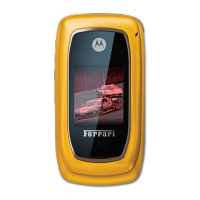
